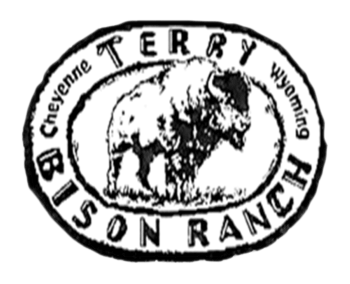What comes to mind when you think of bison? Some people associate bison with Native Americans and great beastly creatures that roamed the vast west. Terry Bison Ranch Resort shares with you a more personal experience with these magnificent creatures and their incredible history of near extinction to survival with the help of ranchers across the country. Christian Samper called the bison an “icon that represents the highest ideals of America: unity, resilience, and healthy landscapes and communities”.
Yellowstone National Park preserves the most important herd in the U.S. The bison in this park have been there free ranging, dating back to prehistoric times. They are the largest population on public land and are “pure”, meaning their bloodlines are not mixed with cattle. An estimated 200,000 bison reside on public land in the U.S. As of August 2017, 4,816 of those are in Yellowstone National Park. Another 162,110 live on private farms and ranches, according to the 2012 US Department of Agriculture census. So, once an endangered species, they are now listed as “near threatened” rather than endangered by the International Union Conservation of Nature (INCU) Red List, due to dependence on conservation programs to survive.
So what’s the difference between the buffalo and the bison that are so symbolic of the Great Plains? Bison is a formal scientific name for this magnificent mammal. When French settlers moved into the area they called them “boeuf” the French word for beef, creating the term buffalo, making it the informal name. There are also 2 kinds of bison. Woods bison are found mostly in Canada and the mountains of the U.S. Plains bison are the bison the TBR’s train tour takes you through.
Males can weigh up to 2200 lbs. and reach a height up to 6 and a half feet. Despite their size they can move very fast. IF the need arises, bison have been known to reach a speed of up to 40mph. Although they can be fast, bison generally take on a threat, such as wolves or grizzly bears, head on and as a group. They are nearsighted but have a very keen sense of hearing and smell. So, if you see one with its tail straight up in the air, BEWARE, it’s agitated.
The lifespan of a bison is 10 to 20 years; however some can live to be older. Baby bison are born orange and red in color which has given them the nickname “red dogs”. Babies are born small, between 30-70 pounds and by the age of 7 to 13 months they are weaned from their mother having gained 400% of their weight. Bison are sexually mature by 2 years old, but older males around 7 years old, do most of the breeding. Bulls and cows do not stay together in a herd. During mating season dominant bulls “tend” to a cow by following her around and blocking her view of competing bulls and “bellow” at those bulls seeking her attention.
Bison are social animals that are usually led by older females. Herds can sometimes be seen rolling in mud pits across the plains. This is called “wallowing”. Bison wallow to protect their skin from insects and scratches. The large fur or beard and bonnet around its massive head allow them to sweep through snow to forage for food 9 to 11 hours a day. What do you eat?
Bison meat is a healthier red meat than beef. Some people worry about eating bison meat because of their history with extinction, but in a way, this could actually preserve their existence by supply and demand. Bison meat is lower in fat and cholesterol, but higher in protein. Ranchers across the Midwest have devoted their time and hard work to bring back these amazingly durable mammals, preserving the species while providing a healthier food source that beef.
If you’d like to see our national mammal up close and personal, then come to the Terry Bison Ranch and learn more about the American bison.
